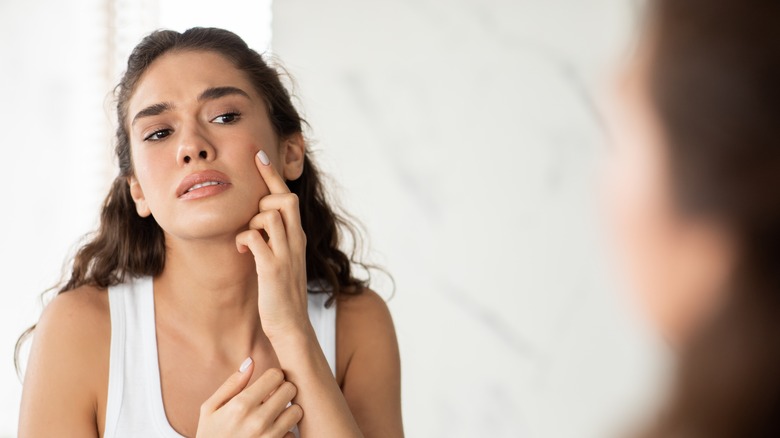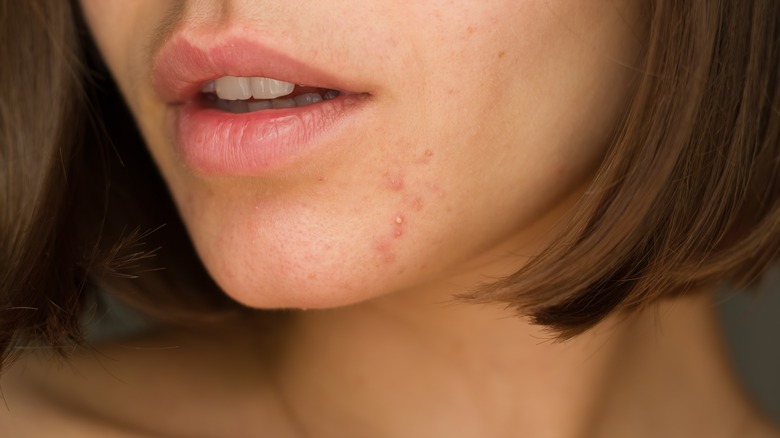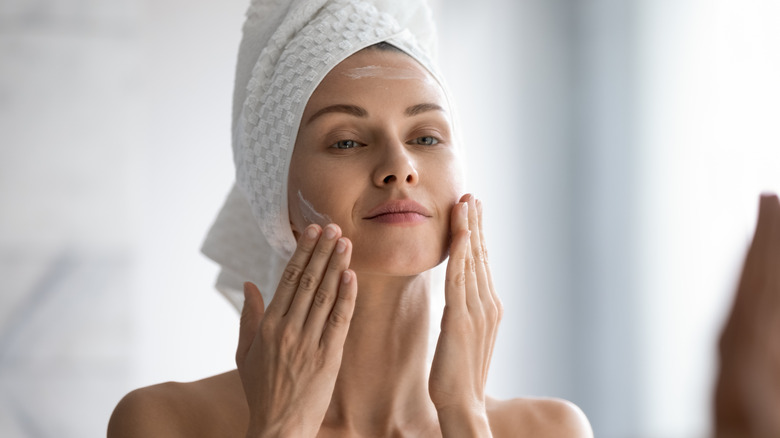The Difference Between Hormonal Acne And Bacterial Acne - And How To Treat Both
When you're having breakouts, you just want them to stop. Acne is a skin condition is typically thought to affect teens but that's a false notion. While Yale Medicine reports that 85% of young people aged 12-24 suffer from acne, adult acne is also common.
"It's a common misconception to think of acne as a teenage disease," explained dermatologist Christopher Bunick on the Yale Medicine website. "One of the most common reasons adult women between the ages 20 of 40, for example, come to the dermatology clinic is for acne. Clinical trial data revealed that approximately 50% of women in their 20s, 33% of women in their 30s, and 25% of women in their 40s suffer from acne."
Like with any other medical issue, getting to the root cause is key to learning how to manage it, so finding out what type of breakout you have is important. Though you may think all acne is the same because it results in pimples, the reason why the breakouts happen can give you clues about the best way to treat it. Two of the most common types of acne include hormonal acne and bacterial acne.
Dealing with hormonal acne
If you notice that breakouts occur around the chin and jawline and get worse during PMS and your period, you might be suffering from hormonal acne. Though hormonal acne can occur in men too, particularly during puberty, it most often occurs in response to the monthly changes in a woman's menstrual cycle. This is especially true during teen years, pregnancy, and menopause.
Hormonal occurs when your skin produces too much sebum, or oil, as a result of rapidly changing hormones, as per Cleveland Clinic. The excess oil mixes with dead skin cells and natural bacteria found on the skin and results in pimples, whiteheads, blackheads, and sometimes, large cysts.
It can be difficult to control hormonal shifts but small lifestyle changes can help improve hormonal acne, such as getting enough sleep, eating a clean diet, avoiding high humidity and air pollution, as well as never picking at pimples or trying to squeeze blackheads. For blackheads and whiteheads, topical creams can help. When it progresses beyond this, a dermatologist may prescribe an antibiotic and possibly a retinoid as well as birth control pills to curb swift hormonal changes. For large cystic cases, steroid injections may help.
When you have bacterial acne
While hormonal acne stems from excess oil production, bacterial acne is a result of excess bacterial production. Everyone has bacteria on their skin. It's a normal and necessary part of the skin's microbiome. However, when bacteria builds, it can mix with the skin's oil and dead skin cells and form pimples (via Health Match).
The treatment for bacterial acne includes medications that keep bacteria at bay. Benzoyl peroxide is a popular topical treatment. When used daily, it's a simple way to reduce bacteria on the skin and is found in several different types of acne creams on the market. You can purchase creams and gels with benzoyl peroxide over the counter.
Another medication commonly used is oral antibiotics. Antibiotics such as tetracycline, minocycline, and doxycycline work well in reducing breakouts. These antibiotics require a prescription from a doctor. Household remedies including tea tree oil and apple cider vinegar are also thought to help curb breakouts.


